
真珠の種類、意味、価値、購入特性
 きらめく真珠を手にしたことがあるなら、それはまさに水が生み出した最もユニークな宝物の一つです。何千年もかけて地殻で形成される鉱物宝石とは異なり、真珠は有機物です。つまり、鉱物化合物ではなく、自然の生物から形成されるのです。
きらめく真珠を手にしたことがあるなら、それはまさに水が生み出した最もユニークな宝物の一つです。何千年もかけて地殻で形成される鉱物宝石とは異なり、真珠は有機物です。つまり、鉱物化合物ではなく、自然の生物から形成されるのです。
古代から現代まで、あらゆる文化で愛されてきた真珠は、文明そのものと同じくらい長い歴史を持っています。では、真珠とは何か、どのように形成されるのか、そして今日、真珠について何を学ぶことができるのでしょうか?
真珠は、ハマグリやムール貝などの軟体動物の軟組織内で形成される天然または人工の有機宝石です。淡水でも海水でも育ちます。現在、市場に出回っている真珠のほとんどは養殖されており、天然真珠を見つけることは稀です。
真珠の意味、用途、特性、そして価値について解説していきますので、ぜひお読みください。まずは、天然真珠と養殖真珠が水中でどのように形成されるのか、詳しく見ていきましょう。
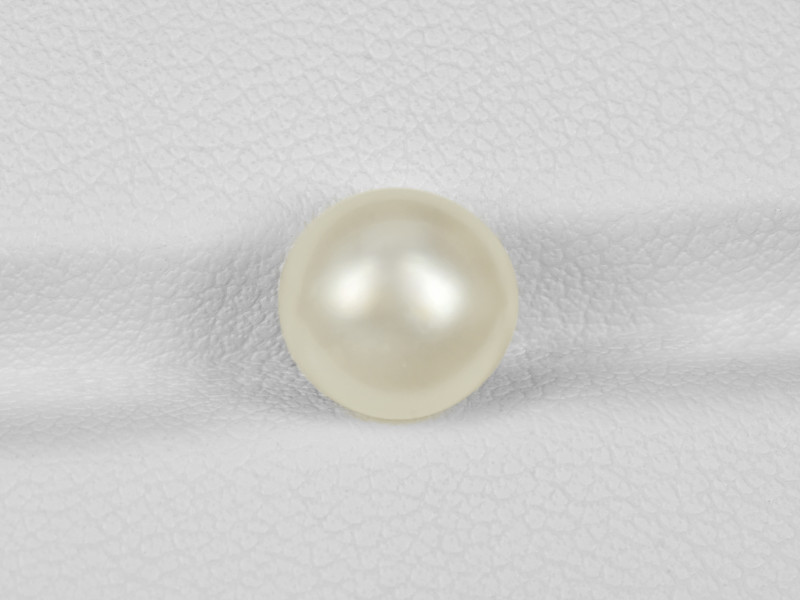
真珠とその成長について
真珠は数少ない生き物から生まれた宝石の一つだということをご存知ですか? 素晴らしいと思いませんか? 真珠は市場で最も耐久性の高い宝石ではありませんが、間違いなく最も長く続く宝石の一つです。時が経つにつれ、真珠の人気は高まり続け、今もなお定番の宝石として愛され続けています。
真珠には、バロック真珠からアコヤ真珠、南洋真珠からタヒチ真珠、淡水真珠から塩真珠まで、様々な種類があります。最も希少なのはコンクパールです。このように多くの種類があるため、購入する際に適切な判断をするためには、真珠が本物かどうかを見分ける方法を知ることが重要です。
真珠は6月の誕生石であり、結婚30周年を迎える方への記念日の贈り物としても最適です。 星座別誕生石チャートでは、真珠は双子座に位置し、水星の下に位置します。
真珠は何でできていますか?
真珠は、3 つの不等直角軸で構成される斜方晶系を持つ炭酸カルシウム (アラゴナイト、方解石、またはその両方の混合物) で構成されています。
真珠は有機物なのに、なぜ宝石なのでしょうか?すべての宝石が地質学的に形成された鉱物ではないからです。宝石は生物学的プロセスによって有機的に形成されることもあり、その結果生じた有機宝石は鉱物ではなく、 鉱物質である可能性があります。他の有機宝石には、サンゴや琥珀などがあります。
真珠はどのように形成されるのでしょうか?
真珠の形成過程は、母なる自然のみが生み出せる現象です。真珠は宝物のように見えますが、実際には砂粒や貝殻に閉じ込められた浮遊細菌といった、ごくありふれたものから形成されます。真珠は何からできているのでしょうか?
殻の内側では、生物の殻を構成するのと同じ柔らかい真珠層を分泌します。これは刺激物の周りに保護膜を形成するために分泌されます。時間が経つにつれて、真珠層の層は硬化し、輝く真珠を形成します。
真珠は、その輝く美しさと真珠のような光沢のため、ネックレス、イヤリング、さらには特別な機会の指輪にも使われる人気の宝石です。
真珠の硬度はどれくらいですか?
真珠は柔らかい石なのかと疑問に思うかもしれません。残念ながら、そうです。ダイヤモンドやサファイアのような硬い宝石とは異なり、真珠は比較的耐久性が低く、 モース硬度スケールでは10段階中2.5~4.5と評価されています。
でも、だからといって真珠を買うのをためらわないでください!真珠は柔らかい素材ですが、美しいジュエリーとして最適です。定期的に洗浄し、手入れすれば、一生、あるいはそれ以上に輝き続けます。
真珠の主要な物理的特性についていくつか説明しましたが、真珠の組成についてさらに何を学ぶ必要があるでしょうか?

真珠の仕様と特徴
真珠には様々な形、大きさ、色があり、これらの特徴は宝石の化学成分に関係しています。詳しく見ていきましょう。
カラー: ホワイト、グレー、ブラック、ブルー、グリーン、オレンジ、イエロー、ブラウン、パープル、ピンク、マルチカラー
結晶構造:非晶質(未定義)
光沢: 真珠のような光沢
透明度: 不透明
屈折率:1.52~1.69
複屈折:0.156
胸の谷間: なし
鉱物クラス:炭酸カルシウム/有機
真珠の種類
真珠には何百もの種類がありますが、ここでは最も人気のある真珠の種類をいくつかご紹介します。天然真珠は非常に希少で、非常に価値が高いことを覚えておいてください。ほとんどの真珠は養殖です。そうでなければ、市場にはほとんど出回らないでしょう。宝石市場でよく見かける真珠の種類をいくつかご紹介します。
淡水真珠
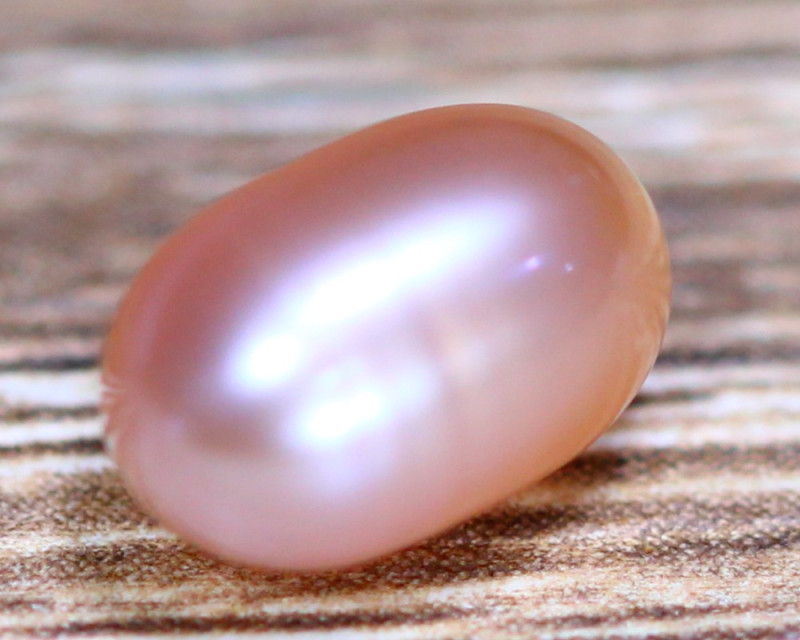
これらの真珠は、川、湖、池などの淡水で形成されます。中国は淡水真珠の主要供給国であり、様々な形、サイズ、色のものがありますが、最も一般的にはアコヤ真珠に似ています。淡水真珠は、核が淡水で成長する薄い組織であるため、真珠層が厚くなります。
塩水真珠
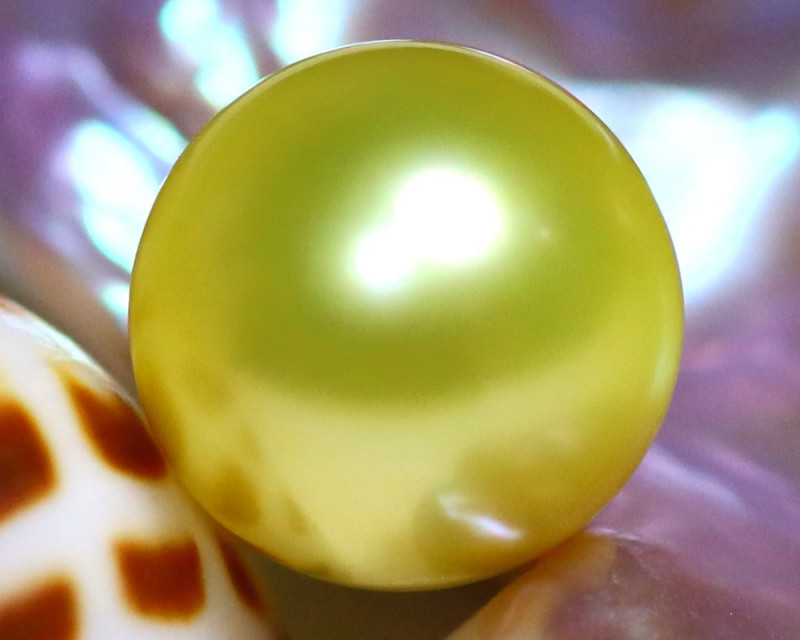
塩分を多く含む海水は、カキなどの軟体動物に海水真珠を産出します。海水真珠の最も一般的な種類は、アコヤ真珠、南洋真珠、タヒチ真珠、そしてブルーパールです。
養殖真珠

養殖真珠は、自然に形成されるのではなく、カキやムール貝に核物質を注入することで、人為的に養殖されます。核物質が注入されると、宿主となる軟体動物は活動を開始し、刺激物が自然に貝殻に流れ込んだかのように、真珠層を形成して真珠を形成します。養殖真珠の主な種類は、アコヤ真珠、淡水真珠、南洋真珠(白真珠と金真珠)、コルテス海真珠、タヒチ真珠です。
天然真珠
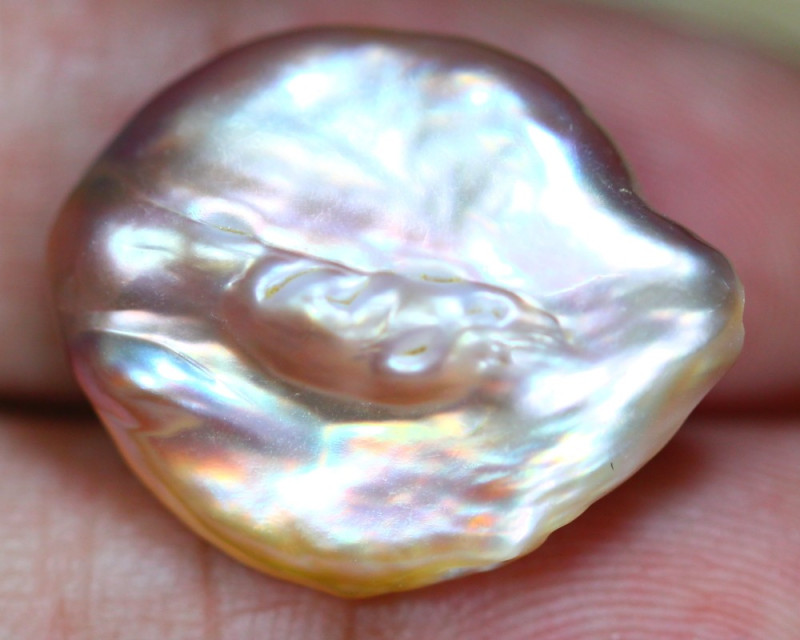
刺激物が軟体動物に自然に侵入すると、宿主は身を守るために炭酸カルシウム層を分泌します。天然真珠は稀にしか産出せず、人間の介入もないため、高価で入手が困難です。ペルシャ湾産の天然真珠のほとんどは既に採取されており、資源は枯渇しています。しかし、それ以前から、天然のカキ1万個に1個しか真珠を産出せず、しかも宝石品質の大きさと形状を持つものは稀です。
アワビ真珠

アワビ真珠は、ハリオティスと呼ばれる軟体動物で育った角のような形の印象的な真珠で、青い真珠で最もよく見られる見事な青い虹彩を持っています。
アコヤ真珠
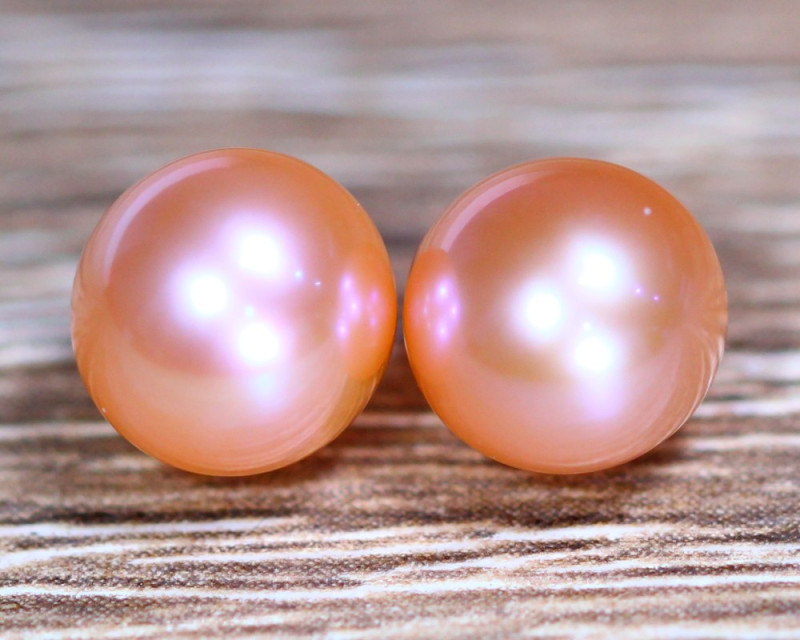
アコヤ真珠は、養殖されたアコヤ貝から採取されます。アコヤ貝は真珠核を核として形成されます。養殖業者がアコヤ貝に核を注入することで、貝が真珠層を分泌し、真珠を形成します。アコヤ真珠は人気が高く、中国、日本、オーストラリア、ベトナム、韓国で産出されます。
南洋真珠
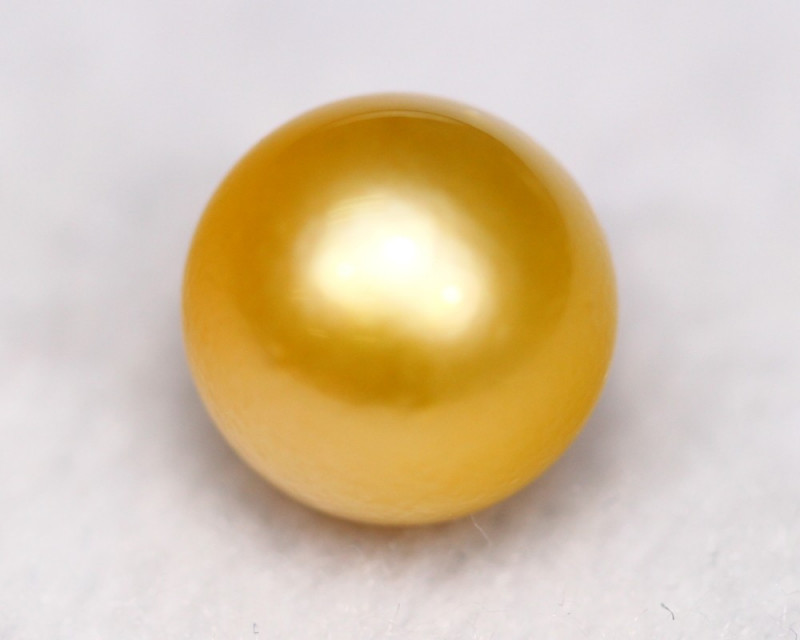
フィリピン、オーストラリア、ミャンマー、インドネシアの太平洋とインド洋の海域では、驚くほど美しい大粒の真珠が形成されます。これらの白、クリーム、または金色の真珠の平均サイズは9~20mmです。このように高く評価され、有名な真珠を産出するのは、アコヤガイ(Pinctada maxima)という貝類のおかげです。
タヒチ真珠(黒真珠)

フランス領ポリネシア諸島の海域に点在するタヒチ真珠は、8~15mmと大きなサイズで人気の高い真珠です。タヒチ真珠はタヒチ産だけでなく、南太平洋の島々から産出されます。これらの美しい真珠は、青、緑、灰色、黒、紫など、様々な色をしています。ただし、黒蝶貝(Pinctada margaritifera)の体内で形成されるため、「黒真珠」と呼ばれています。
ただし、原産地がフランス領ポリネシアでなくても、色が濃い真珠は黒真珠とも呼ばれます。
メロパール

これらの希少な真珠は東南アジア産で、メロメロという海の貝の体内で育ちます。軟体動物の体内で育たないため、正式には真珠ではありません。しかし、真珠と同じ環境で育つため、このリストに載るに至りました。
真珠には他にも何百種類もの種類がありますが、ここでは趣を変えて、真珠のさまざまな意味と重要性について詳しく見ていきましょう。
真珠の意味と歴史
真珠(パール)という言葉は、ラテン語の「Perna」と古フランス語の「 Perle」に由来しています。どちらも「脚」を意味し、「羊肉のような形をした二枚貝の脚」が短縮されたものです。えっ? 詳しく見てみましょう。羊肉は二枚貝または水生軟体動物のような形をした羊の肉です。真珠(パール)は「真珠母(マザー・オブ・パール)」が短縮された言葉で、真珠が体内で形成される宿主生物のことです。
真珠の意味や起源以外にも、真珠という言葉は光沢のある形や輝きを表すために使われます。真珠の特別なところは何でしょうか?その答えを見つけるために、真珠の輝かしい歴史と伝説を見てみましょう。

象徴と神話
真珠が最も古く、最も大切にされてきた宝石の一つであることは、驚くべきことではありません。真珠は、その成長過程と同じくらいダイナミックな文化の歴史を刻んできました。その幻想的で夢のような外観から、真珠は世界中の象徴や民間伝承において、月、水、そして女性らしさを象徴してきました。
真珠は水中で生まれ、月は海の潮汐や海流をコントロールするため、真珠と月の象徴には強い結びつきがあります。
真珠は古来より月の娘と考えられてきました。この結びつきを強めるのは、月が女性らしさと女性的なエネルギーの象徴として描かれていることです。しかし、真珠とその神話はどこから来たのでしょうか?
真珠の意味は、もともとヴェーダの文献に由来しており、そこには、地球の水と神のエネルギーが真珠を宿し、稲妻でそれを肥やしたと記されています。
真珠は、その流動的な形と動きから、水の象徴です。神話では、白い真珠は神の涙と考えられています。聖書の伝承には、エデンの園から追放されたイブの涙が輝く真珠に変わったという逸話もあります。
さらに、真珠が富をもたらす導管として描かれているという伝説もあります。この伝説は、富を呼び寄せるために呪文を唱える古代の慣習に由来しています。その儀式では、良質の真珠を選び、それをゴミ箱に捨てるというものでした。おやおや!しかし、この伝統は無駄ではありませんでした。美しい真珠を処分できるほど裕福な人は、その宝物を失うほど裕福であるはずだ、という考え方です。
今日、私たちは上質な真珠を捨てたりしません。むしろ、真珠の持つホリスティックな効能を吸収するために身につけています。しかし、それについては後ほど詳しく説明します。
富を超えて、私たちは賢明なアドバイスを「知恵の真珠」と呼び、真珠を知識を吸い上げる知性や先見の明と結び付けています。

真珠のスピリチュアルな効果と癒しの効果
真珠はスピリチュアルな面でどのような効果をもたらすのでしょうか?多くのクリスタルヒーリング実践者は、生殖や妊娠のために真珠を使用しています。
真珠は妊娠力を高め、出産時の負担を軽減すると言われています。女性的な月のエネルギーを持つ真珠は、ホルモンバランスと体のバランスを整えてくれます。真珠がどのチャクラと関連しているか気になる方は、アナハタチャクラ、つまりハートチャクラにエネルギーを与えるのがおすすめです。
ハートチャクラは共感と愛の中心なので、真珠を身につけることは感情的な傷を和らげたり、トラウマ的な出来事の後で許すのに役立ちます。
身体的には、真珠は酸性度を下げ、膨満感や胃酸の逆流を中和することで消化管の働きを良くし、筋肉系を強化する効果があります。
真珠が天界の力や直感と結び付けられていることを覚えていますか?真珠を使ったヒーリングは、高次の世界とのつながりを強め、信仰を取り戻すのに役立ちます。
真珠を買って、月の恵みのエネルギーを吸収する準備はできていますか?素晴らしいですね!お買い物の前に、真珠の価値と価格に影響を与える重要な宝石の特性について見ていきましょう。

真珠の宝石特性
養殖真珠のおかげで、何百種類もの異なるサイズ、形、スタイルからお選びいただけます。さらに、 真珠の等級付けには独自の基準があります。
サイズと形状
一般的に、大きいサイズの真珠は高価です。しかし、大きさだけが価値の指標ではありません。真珠の種類によって流行り廃りがあり、流行によって価格も変動します。
完璧な丸みを帯びた対称形の真珠は、最も高く評価され、人気があります。そのため、これらの美しい真珠は高額で取引されています。より手頃な選択肢としては、楕円形やオフラウンド型の真珠があります。これらは対称形の真珠に似ていますが、価格はそれほど高くありません。
最も安価なのはバロックシェイプですが、その型破りなシェイプが流行しているので、価格が急騰する前に急いで手に入れましょう。
色
時代を超えたホワイトパールから、モダンなグリーンやブラックのバリエーションまで、あらゆる人に似合うパールカラーが見つかります。最も人気があり、最も高級なのはホワイトパールですが、このカラーパレットの素晴らしい点は、どんな色にも合わせられることです。色よりもはるかに重要なのは、虹彩の輝きです。宝石のような品質のパールは、ピンク、グリーン、ブルー、そしてホワイトの柔らかな色合いを放つ真珠のような光沢を放ちます。
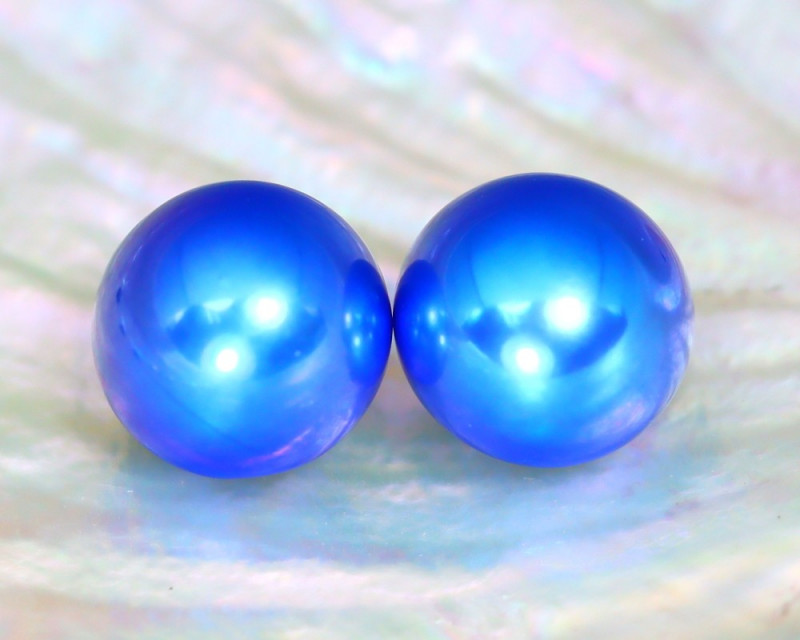
光沢
最も印象的な真珠の特徴は、高い光沢です。つまり、真珠は鈍い輝きではなく、輝く真珠光沢を持っているということです。
治療
ほとんどの養殖真珠は処理を受けているため、真珠の価値と寿命に影響を与える様々な工程を理解することが重要です。処理は、購入する真珠の種類によって異なります。例えば、アコヤ真珠のような淡水真珠は、通常、日光または過酸化水素で漂白されます。他の真珠は、黒色や白色以外の色に染色されます。
真珠の黒ずみを薄くするもう一つの加工法は、放射線照射です。放射線照射は真珠の虹彩と光沢を高めるのに役立ちます。ただし、放射線照射は価格と価値を下げる可能性があることにご注意ください。光沢を高めるために、真珠は熱処理を受けます。
真珠にコーティングを施すことは、真珠を傷つけ、輝きを失わせるため、好ましくありません。真珠を購入する際は、宝石店にどのような処理が施されているかを必ず確認し、長期的な真珠の劣化を防ぐようにしてください。
模造真珠はどうですか?
宝石市場にはあらゆる宝石の合成模造品が存在し、真珠も例外ではありません。ガラスビーズを加工して真珠のように見せることは可能ですが、あまりにも滑らかすぎます。本物の真珠は鱗状の質感とざらざらとした質感を持っているため、模造真珠は簡単に見分けることができます。
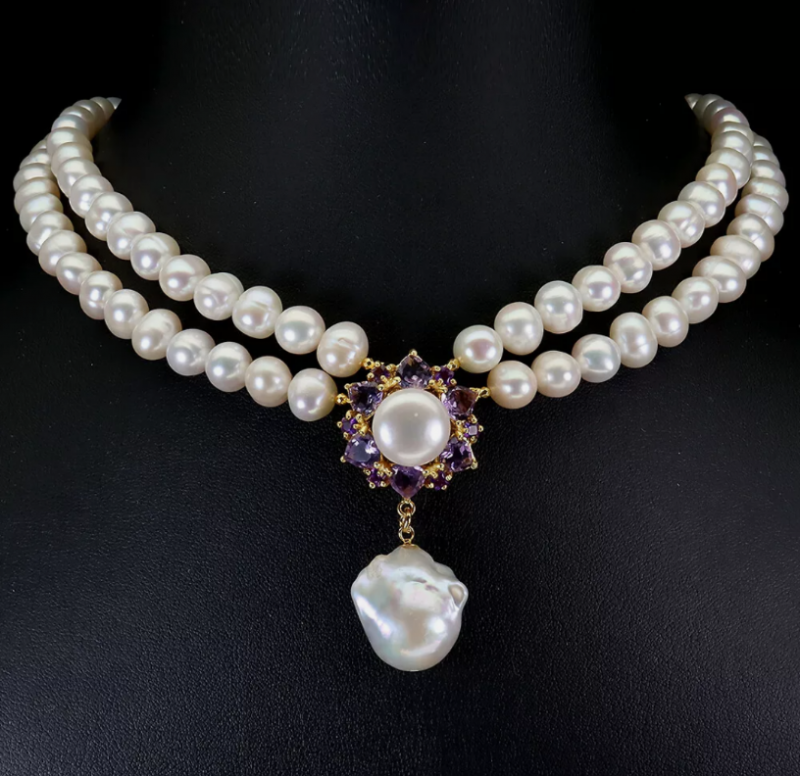
真珠の起源と産地
ほとんどの真珠は養殖場で養殖されていると申し上げましたが、真珠はどこから来るのでしょうか?真珠の産地はいくつかあり、例えば以下のようなものがあります。
海水真珠
インド洋と南太平洋
養殖真珠
中国
日本
インドネシア
ミャンマー
オーストラリア
フィリピン
フランス領ポリネシア(主にタヒチ)
淡水真珠
中国
日本
アメリカ合衆国
真珠のケアとメンテナンス
真珠は天然の多孔質有機宝石で、柔らかい組成のため、変色や損傷を受けやすい性質があります。真珠を長く使い、永遠に光の中で輝き続けるためのお手入れ方法をご紹介します。
化学物質や粉末が真珠に付着するのを避けるため、化粧や香水をつけるまで真珠をつけるのを待ちます。
真珠のジュエリーを身に着けた後は、湿らせた柔らかい布で拭いて、油、香水、環境ゴミなどを取り除いてください。
洗剤を使わない温かい石鹸水で真珠を洗い、汚れやこびり付いたものを落とします。洗面台から離れた柔らかい布の上に置いて乾かしてください。
カウンター、ダイヤモンド、その他の硬い宝石などの硬い表面に真珠をぶつけないように注意してください。
真珠を乾燥させる原因となる湿気や湿気のない、密閉された宝石箱に真珠を保管してください。
市販の洗剤や酢に含まれる染料や化学物質が貴重な真珠を傷める可能性があるため、洗浄、漂白、洗濯をする際には真珠を絶対に着用しないでください。
最後に、真珠の価格についてお話ししましょう。そうすれば、真珠にいくら払うことになるのかがわかるでしょう。

真珠の価格と価値
真珠の特性についてお話しした際に、光沢、サイズ、色、産地といった特徴が真珠の価格に影響を与えることをお伝えしました。ここでは、購入可能な最も一般的な種類の真珠の平均価格の内訳をご紹介します。
ホワイト淡水パールのペアリング
6~11mmのトップラスターパール:100~500米ドル
6~11mmの高光沢真珠:60~380米ドル
ホワイトアコヤ真珠
6~9.5 mmのトップラスターパール:110~4,500米ドル
6~9.5 mmの高光沢真珠:90~2,250米ドル
タヒチ産黒蝶真珠
8~13 mmのトップラスターパール:270~1,500米ドル
8~13個の高光沢真珠:270~900米ドル
南洋シングルパール
8~14個のトップラスターホワイトパール:450~8,100米ドル
8~14個の高金真珠:315~5,400米ドル

真珠:完璧なアクセサリー
真珠をオンラインで購入する準備はできていますか?この美しい宝石のユニークな特徴をすべて理解したので、真珠を購入する際にその知識を活用できます。真珠は、何世紀にもわたって王族、貴族、社交界の人々の首を飾ってきた愛すべきアクセサリーです。
エレガントなパールのストランドを誇示する人も、ルースバロックパールの素朴な外観を好む人も、パールは、常に流行の優雅さを添えてくれることは間違いありません。それに抵抗できる人がいるでしょうか?
Gemstone Encyclopedia検索
最新記事
ヤシ象牙彫刻は、植物象牙とも呼ばれ、南米のヤシ科植物フィテレファス属のヤシの実から倫理的に採取された、象牙の天然代替品です。このガイドでヤシ象牙についてすべて学びましょう!
15th Jan 2026
レインボーラティスサンストーンは、様々な内包物によって3つのゴージャスな光学的効果を持つ長石の一種です。燃えるように鮮やかな色合いと格子模様が、コレクターにとって希少な宝石となっています。
12th Jan 2026
記事のカテゴリ
How To's is where you will find helpful articles from gem Rock Auctions on how to cut gemstones, select gemstones and buy gemstones.
9記事数

